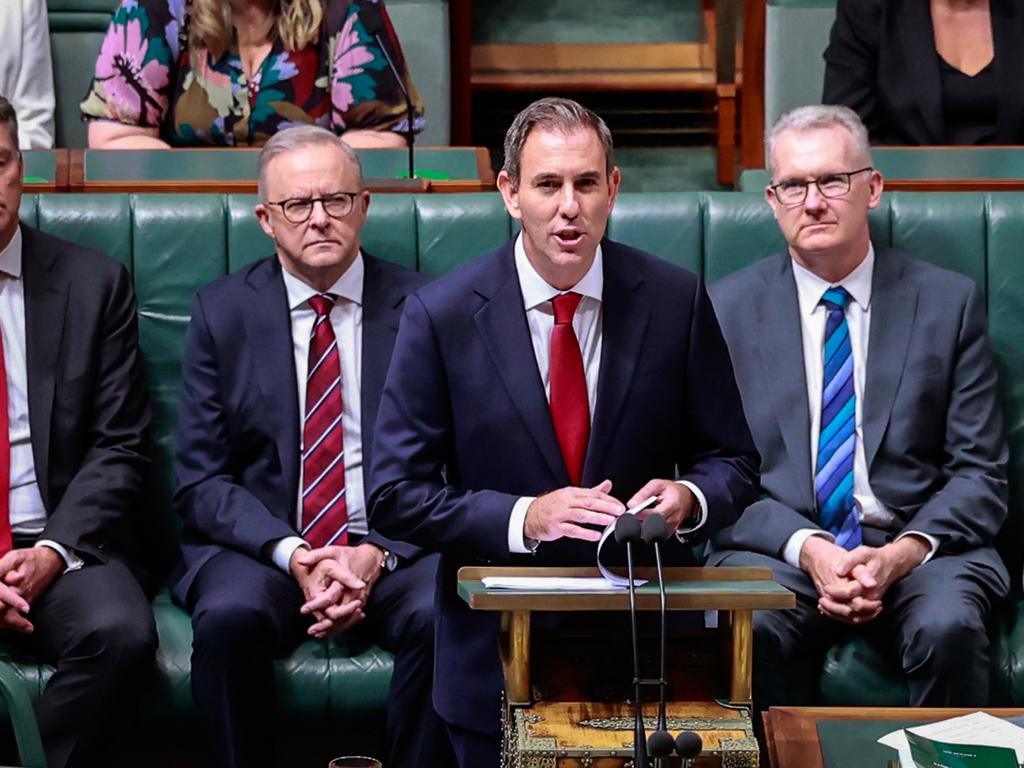The 2025 federal budget in five charts
Despite a resources rush, Labor has presided over the biggest deterioration in the budget outside an economic crisis or a pandemic.
Jim Chalmers’ fourth budget reveals consecutive deficits of $27.6bn in 2024-25, deteriorating to $42.1bn in 2025-26. Given the budget was in surplus in 2023-24, Labor has presided over the biggest deterioration in the budget outside an economic crisis or a pandemic. The Treasurer’s deficit for next financial year is only slightly better than what he forecast for the same year in his first budget in October 2022 ($49.6bn), when 2025-26 was the last year of the forward estimates. This is despite the resources revenue rush that delivered Dr Chalmers two unexpected surpluses early in his tenure.
Peak spending
Dr Chalmers’ budget forecasts spending under the Albanese government hitting 27 per cent of GDP in 2025-26. In comparison with other Labor governments, the Whitlam peak was 24.3 per cent, the Hawke-Keating era peaked at 27.5 per cent and the Rudd-Gillard-Rudd government reached 25.8 per cent. The Howard government’s first budget recorded spending at 25.1 per cent of GDP as it brought payments down from the end of Keating Labor rule and kept it below that point throughout. Aside from the Covid pandemic years, the Abbott-Turnbull-Morrison government’s spending peaked at 25.5 per cent.
Individual taxpayers bear the brunt
Ever get that creeping feeling you’re paying more than your fair share of tax? The budget papers suggest you are, with the percentage of all government receipts that comes from individual and withholding taxes reaching 50 per cent in 2028-29 – and that’s even with the government’s new tax cuts in 2026-27 and 2027-28. Workers paid only 42 per cent when Labor came to power in 2007 but that rose to 48.3 per cent in 2015-16, prompting the Coalition to launch its three-stage tax reforms. Labor heavily modified stage three early in 2023 to benefit middle-income earners but at the same time overrode one of the key goals of the reforms: to reduce bracket creep as workers’ increased earnings lifted them into a higher tax bracket.
A decade of deficits
The long-term outlook leaves the budget in the red all the way to 2034-35. The NDIS, health, defence and welfare are the biggest strains on the nation’s finances, along with interest payments on the huge debt that built up during the Covid pandemic and as spending has surged since the Albanese government was elected.
Diving deeper into debt (above)
Dr Chalmers was keen to trumpet Labor’s success in reducing gross debt in 2024-25 from $1.1bn just before the Albanese government came to power to $940bn in this year’s budget. But look behind those numbers at gross debt as a percentage of GDP and the picture changes. Treasury expects it to peak at 36.9 per cent in 2027-28, up from a forecast peak of 35.2 per cent less than a year ago, in last year’s budget.
Catch up on all of our federal budget coverage here.




To join the conversation, please log in. Don't have an account? Register
Join the conversation, you are commenting as Logout